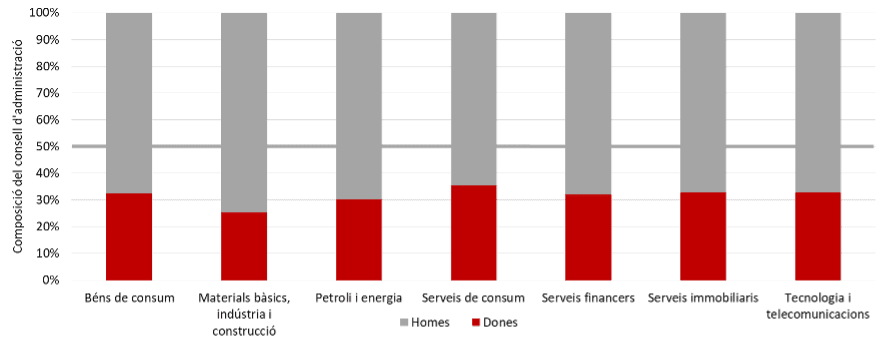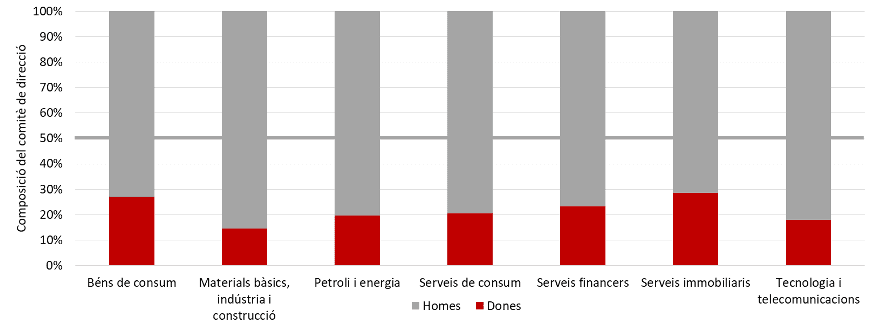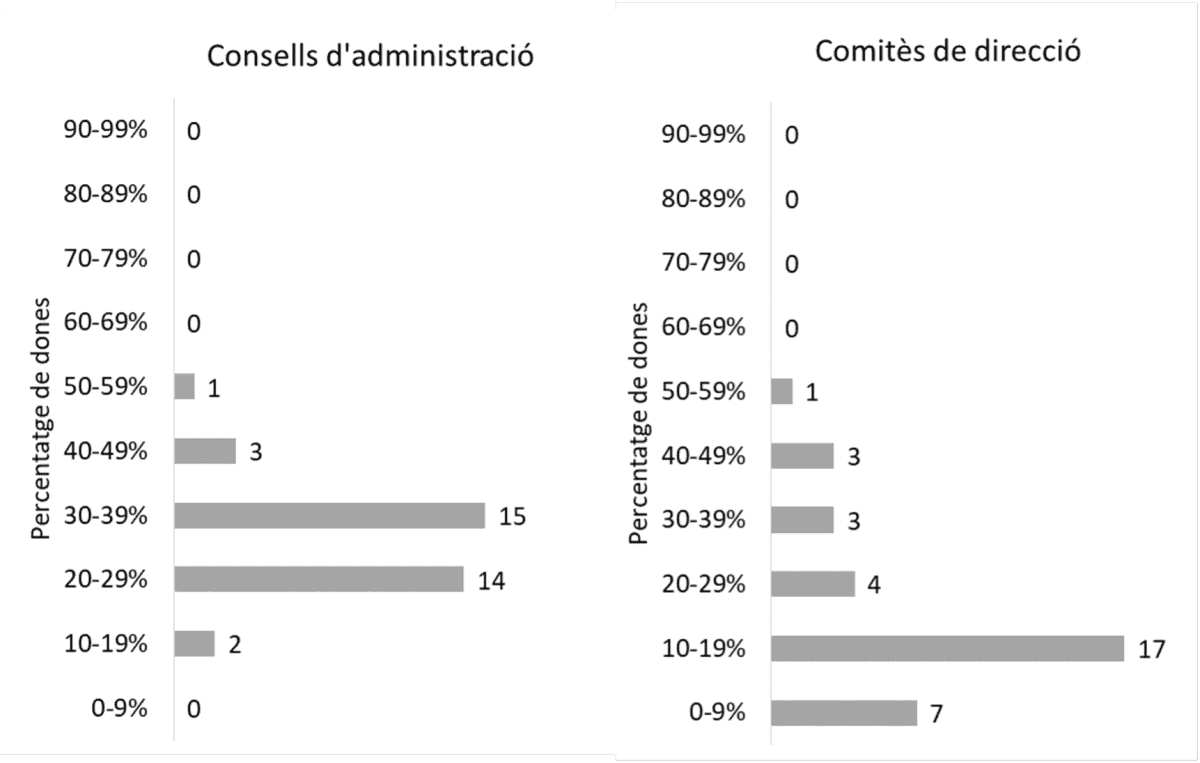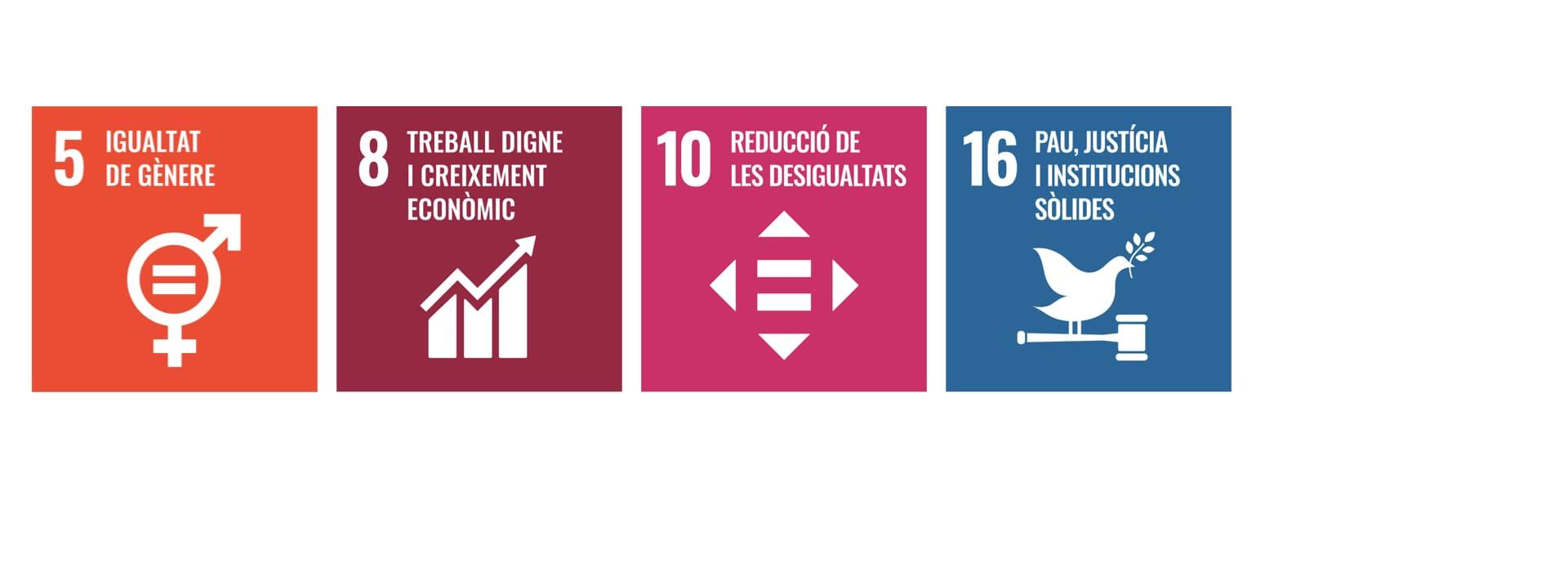Gender inequality in the IBEX-35
1 Marzo - 2021
Erola Palau Pinyana
Researcher in the Operations, Technology & Science Dept.
__
We have often heard the metaphor of the glass ceiling, which refers to the invisible barrier that prevents women from advancing vertically in organisations. We might think that, nowadays, this ceiling has already been broken, that women do not face obstacle to achieving managerial positions and that there is little left to achieve full gender equality in the business world. But to believe this would be wrong.
Only 4 of the 35 companies in the Spanish stock market index comply with the CNMV's recommendations on board diversity
In order to ascertain the reality of gender equality in the top positions of IBEX-35 companies, the proportion of women on boards of directors and management committees has been studied, based on the most current data published by each company as of mid-February 2021.
The results of this study show that, in 2021, the boards of directors of IBEX-35 companies will be made up, on average, of 32% women. This figure is reduced to less than half in the management committees, where only 19% of the members are women. If we also look at the fact that only two companies (5.7%) in the IBEX-35 are chaired by women and only four (11.4%) have female vice-chairpersons, female directors or female CEOs, we realise that the situation is worrying.
None of the seven business sectors meets the recommended values for women on boards, and values plummet on management committees
These data clash with the code of good governance for listed companies of the Spanish National Securities Market Commission (CNMV), revised in June 2020, which presents a series of recommendations on the composition of boards of directors. This code indicates that, with regard to gender diversity, the number of female directors should represent 40% of the total number of company members by 2022, a percentage that is far from the current reality.
Analysis by sector
If we analyse the survey data from the point of view of sectors of economic activity, we observe that none of the seven sectors represented in the IBEX-35 achieves, on average, this recommended percentage of 40% of female boards members, as shown in Figure 1.

Figure 1 shows that the basic materials, industry and construction sector has the lowest number of female board members, and it is worth noting that some companies in this sector do not even have 20% women. In most sectors, however, the number of women is between 30% and 32%. The highest percentage of female directors is found in the consumer services sector (35%). It should be added that only one company has a board of directors with full parity. This is a company in the oil and energy sector, with a board of 12 members, six of whom are women.
If the situation is critical on boards of director, the percentage of women on management committees plummets. The average proportion of women on these committees is 19% [see Figure 2]. As is the case at board level, the basic materials, industry and construction sector has the fewest female directors (12%), followed by the technology and telecommunications sector (14%) and consumer services. In contrast, the sectors with the highest presence of female managers are real estate services (26%) and consumer goods (24%).

Counting companies
Looking globally, if we tally the companies by looking at the proportion of women on boards and management committees, we also find a clearly downward skewed distribution. Starting with boards, Figure 3 shows that 15 companies have a proportion of between 30% and 39% women, and 14 companies have boards with between 20% and 29% women. At the time of the study, only four organisations meet the parity requirements, while two fall below the half recommended by the CNMV.
If we look at the management committees, we observe, once again, even lower values. Two thirds of the companies are composed of less than 19% female executives. Seven committees are made up of between 20% and 39% women, and only four committees are made up of more than 40% women.

This study brings to light not very encouraging data that show an abysmal difference in the presence of women in management positions in the IBEX-35. The glass ceiling still exists in Spain. It is a clean glass, an invisible barrier present in the most listed companies in the country and real in many large Spanish companies.
Gender inequality is well entrenched in corporate structures, and promoting a balanced presence of women and men on the boards of organisations is a challenge
It is true that progress has been made in recent years and parity is approaching in management bodies and boards of directors, but the male presence is in the majority and there is still some way to go to achieve a situation of full equality between women and men in management positions.
In 2022, the percentage recommended by the CNMV's code of good governance should be met. There are only a few months left to achieve this, so it is clear that we will revisit this issue. For now, let's think about it. Let us look for ways to break through this invisible ceiling. Let us fight now so that our colleagues, sisters and daughters do not have to face it and our granddaughters see it as a reminiscence of the past.

